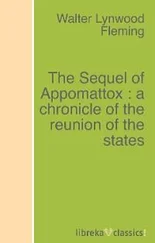Walter Gallichan - The Story of Seville
Здесь есть возможность читать онлайн «Walter Gallichan - The Story of Seville» — ознакомительный отрывок электронной книги совершенно бесплатно, а после прочтения отрывка купить полную версию. В некоторых случаях можно слушать аудио, скачать через торрент в формате fb2 и присутствует краткое содержание. Жанр: foreign_antique, foreign_prose, Путешествия и география, на английском языке. Описание произведения, (предисловие) а так же отзывы посетителей доступны на портале библиотеки ЛибКат.
- Название:The Story of Seville
- Автор:
- Жанр:
- Год:неизвестен
- ISBN:нет данных
- Рейтинг книги:4 / 5. Голосов: 1
-
Избранное:Добавить в избранное
- Отзывы:
-
Ваша оценка:
- 80
- 1
- 2
- 3
- 4
- 5
The Story of Seville: краткое содержание, описание и аннотация
Предлагаем к чтению аннотацию, описание, краткое содержание или предисловие (зависит от того, что написал сам автор книги «The Story of Seville»). Если вы не нашли необходимую информацию о книге — напишите в комментариях, мы постараемся отыскать её.
The Story of Seville — читать онлайн ознакомительный отрывок
Ниже представлен текст книги, разбитый по страницам. Система сохранения места последней прочитанной страницы, позволяет с удобством читать онлайн бесплатно книгу «The Story of Seville», без необходимости каждый раз заново искать на чём Вы остановились. Поставьте закладку, и сможете в любой момент перейти на страницу, на которой закончили чтение.
Интервал:
Закладка:
Seville in the days of Moorish might was one of the fairest cities on earth. Beautiful palaces were built upon the sites of the Roman halls, gardens were shady with palms, and odorous with the blossom of orange trees, and there were hundreds of public baths. The streets were paved and lighted. In winter the houses were warmed, and in summer cooled by scented air brought by pipes from beds of flowers.
Poetry, music and the arts were cultivated; the philosopher and the artist were held in respect. There were halls of learning and great libraries, which were visited by scholars from all parts of Europe.
The Alcázar, the Mosque, the lordly Giralda Tower and other remains testify to the ancient splendour of Seville. It was the Moor who applied the method of science to the cultivation of the plains, who bred the cattle, introduced the orange tree, and planted the palm in the city. Granada and Seville were centres of silk-growing. Here were manufactured the damascened swords and other weapons, and beautiful metal work of divers kinds, which was in demand all over Spain for centuries. Moorish civilisation was unsurpassed for its handicrafts and architectural decorations. Long after the Christian reclamation of Seville, the Mudéjar , or Moor, living under the new rule, was employed by the State to construct bridges and to build castles, to design houses, and to decorate them with the wonderful glazed tiles and imperishable colours.
Among the learned Moors of Seville the most eminent was Abu Omar Ahmed Ben Abdallah, known as El Begi. Abu Omar's father had spared no cost in providing for his son's education. He employed as tutors the greatest scholars of the time, and sent the lad to Africa, Syria, Egypt and Khorassan in order to confer with sage men and doctors of repute. At the age of eighteen years Abu Omar was wonderfully cultured, and as he grew to middle age there was no man who could surpass him in knowledge of arts and sciences. 'Even in his earliest youth, the Cadi of that city, Aben Faweris,' says Condé, 'very frequently consulted him in affairs of the highest importance.' El Begi, the Sage, was born in Seville and lived there during most of his life.
Many philosophers must have mused in this cultured age amid the orange trees of the court of the magnificent mosque. From the summit of the Giralda, astronomers surveyed the spangled sky, making observations for the construction of astronomical tables. Chemists questioned nature in the laboratories by means of careful experiments, and mathematicians taught in the schools. There were seventy public libraries in Andalusia; the library of the State contained six hundred thousand volumes, and the catalogue included forty-four tomes. Scholars also possessed large private libraries. There was no censorship, no meddling with the works of genius. Men of science were encouraged to investigate every problem of human existence. Abu Abdallah wrote an encyclopædia of the sciences. The theory of the evolution of species was part of the Arab education. Moorish thought was destined to influence Spain for ages. The discovery of the New World was due to the Mohammedan teaching of the sphericity of the earth, and it was the work of Averroes that set Christopher Columbus thinking upon his voyage of exploration.
The Moors in Seville were not only a cultured and devout community. They were commercial and manufacturing, weavers of cotton, silk and wool, makers of leather and paper, and growers of grain. In their hours of recreation they played chess, sang and danced. Their dances have survived to this day in the south of Spain, and may be witnessed in the cafés of Seville and Malaga.
CHAPTER II
'All the intellect of the country which was not employed in the service of the church was devoted to the profession of arms.'
Buckle, History of Civilisation .IN 1023 Abu el Kásim Mohammed, then Cadi of Seville, raised a revolt against the Berber rulers of Andalusia. The rising was successful, and the town once more became a capital. Under the Abbadid dynasty, and the rule of Motadid and Motamid, Seville was secure and peaceful. Stirring days came with the rise of the Almoravides in the eleventh century. In Morocco, Yussuf, son of Tashfin, had been inspired to wage battle in the name of a reformed religion. The Almoravides, or Mourabitins, i. e. , 'those who are consecrated to the service of God,' were a fanatical sect led by an intrepid warrior. They had made havoc in Northern Africa, deposing sovereigns and seizing territory. Now they were to make history in Spain.
Under Alfonso III. the Spaniards of the northern and central parts of the Peninsula had prospered in their arduous task of stemming the advance of the Moors northwards. Spain had won back Asturias, Galicia, and part of Navarre, and in time León and Castile were restored to Christian rule. But under Almanzor, a most redoubtable commander, León fell, and the whole population of its capital was slaughtered. The death of Almanzor, in 1002, brought about vast changes for the Moorish kingdom in the south of Spain. There was no great leader to control the fortunes of Islam. The territorial governors were in constant dispute, and often at war one with the other. It was a golden opportunity for the soldiers of the Cross.
In 1054 Fernando I., a sagacious ruler of León and Castile, made a crusade against the Moors of Portugal, and brought the King of Toledo to his knees. He besieged Valencia and brought his troops into Andalusia. Under Alfonso VI., Toledo was recovered, amid the rejoicings of the Christian host, who anticipated a speedy delivery from the Morisco domination. The coming of Yussuf and his fierce Almoravides dashed the hopes of Alfonso's army. Finding themselves encompassed with growing dangers, the Moors of Spain begged the assistance of the powerful Almoravides. A conference of the Moorish rulers was held at Seville, and a message sent to Yussuf. The Almoravide King was astute. At first he displayed but little sympathy for his brethren in Spain. But the offer of Algeciras induced him to promise aid, and he came with a strong army of Moors and Berbers. Alfonso was informed that a profession of belief in the creed of Mahomet would spare him from certain death. The Christian sovereign replied by allying himself with Sancho of Navarre, and bringing a force to meet Yussuf. Between Badajoz and Merida the armies met in a terrible conflict. Alfonso was forced to retreat, and for the present Yussuf offered no further demonstration of his military skill.
Next year the King of Morocco returned to Spain with his army, and exhorted the Moors of Andalusia to unite with him in a war of extinction. The petty sovereigns showed but little enthusiasm for a campaign. Probably they distrusted Yussuf's motives. Such suspicion was not without a basis, for when the Almoravides came for the third time, the monarch plainly stated that he purposed to annex all the remaining Mohammedan region. With a hundred thousand men, Yussuf took Seville and Granada. Alfonso came to the assistance of the Sevillians with a force of twenty thousand; but the Almoravides seized the city, and held it until the days of the Almohades in 1147.
Alfonso then sought the alliance of France to assist his nation in expelling the African invaders. But the power of the Almoravides grew. Córdova was their seat of government, and Seville was one of their most important cities. The Moriscoes in Spain were no longer an independent race, but under the sway of Morocco. Motamid II. doubtless rued the hour when he sought aid from Yussuf. Fair Seville had passed out of his hands.
At this time there arose the famous Cid, the revered warrior and type of Spanish chivalry. Many are the legends and ballads extolling the bravery of this champion of Christendom. Some of the stories of his deeds are so improbable that certain historians of Spain have regarded the hero as a character of fable; but Professor Dozy has investigated the old chronicles, both Spanish and Moorish, and reached the conclusion that there was a Cid, a mighty soldier and a devout Catholic, named Rodrigo Diez de Bivar. There is no doubt that the Cid loved the field of battle from his youth, and that he was ever ready to fight, sometimes for the Christians, and sometimes for Moorish chieftains at war with one another. In the end he became a valorous freebooter, with a following of the sons of noble families. The Cid came at least on one occasion to Seville as an emissary of King Alfonso to Motamid, to collect sums due from the Arab ruler. Motamid was then at strife with Abdallah, King of Granada, who was assisted by certain Christian caballeros , including Garci Ordoñez, formerly standard-bearer to Fernando. The Cid endeavoured to restrain the King of Granada from making war upon Motamid's city, but Abdallah was not to be influenced for peace. He went forth and was met by the combined armies of the Cid and Motamid of Seville, and defeated with much loss. Ordoñez and the Christian cavaliers were taken prisoners. The Cid took his tribute, and certain costly gifts for Alfonso from Motamid, and departed. Soon after this episode in Andalusia, Alfonso heard that Rodrigo, the Cid, had retained some of the presents sent by the King of Seville. This report was set going by Garci Ordoñez in revenge for his defeat at the hands of the Cid and Motamid, and the tale was credited by King Alfonso. There was already prejudice against the Cid in the royal mind, and Alfonso was still further displeased when his general went to attack Abdallah without permission. When he heard that, to crown all, the Cid had exhibited dishonesty, Alfonso was wroth, and banished Rodrigo from the kingdom. But the Cid gained immense power and homage as an independent sovereign, and when Alfonso was in sore need of a general to fight for him against the Almoravides, he approached the gallant Rodrigo with assurances of friendliness, and solicited his aid. Perhaps the missive of Alfonso went astray; at anyrate, the Cid did not at once respond to the King's call for help. This apparent apathy incensed Alfonso. Again he sought to punish the Cid, confiscating his estates and imprisoning his wife and children. And again the invincible Rodrigo proclaimed himself a king on his own account. He died in 1099, and at his death his territory was taken by Yussuf, the Almoravide. The Cid's bridle, worn by his steed, Babieca, hangs in the Capilla de la Granada, in the south-east corner of the Court of the Oranges at Seville.
Читать дальшеИнтервал:
Закладка:
Похожие книги на «The Story of Seville»
Представляем Вашему вниманию похожие книги на «The Story of Seville» списком для выбора. Мы отобрали схожую по названию и смыслу литературу в надежде предоставить читателям больше вариантов отыскать новые, интересные, ещё непрочитанные произведения.
Обсуждение, отзывы о книге «The Story of Seville» и просто собственные мнения читателей. Оставьте ваши комментарии, напишите, что Вы думаете о произведении, его смысле или главных героях. Укажите что конкретно понравилось, а что нет, и почему Вы так считаете.












